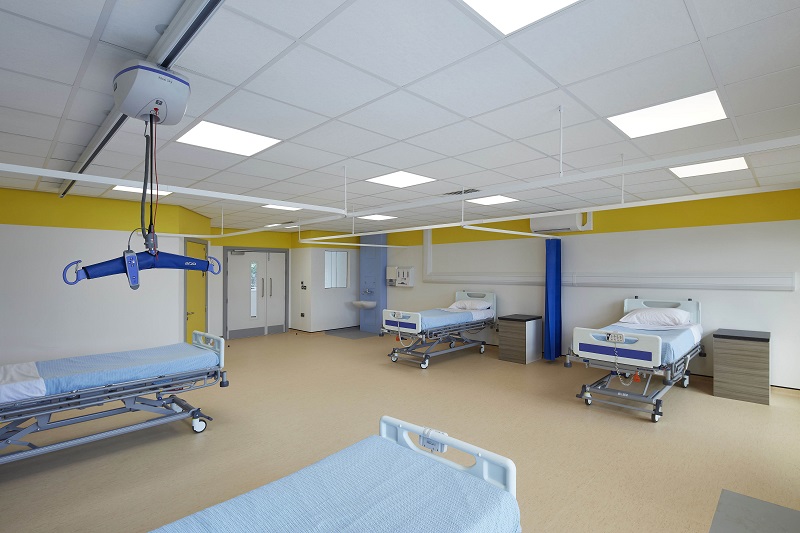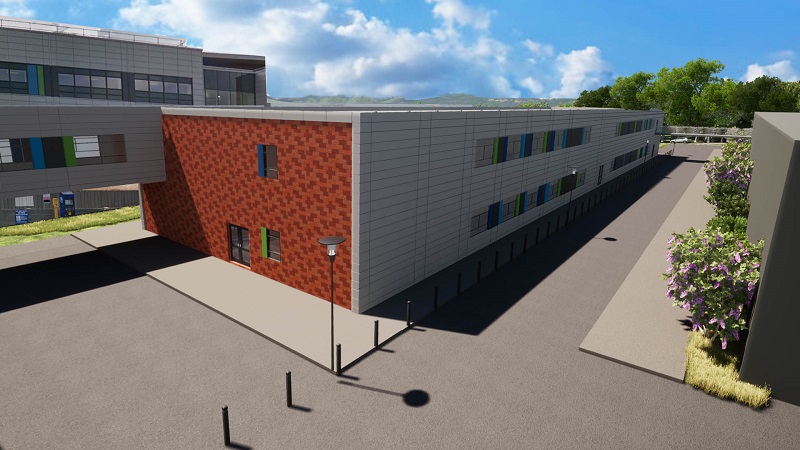In recent years, the Government has made a firm commitment to embrace modern methods of construction (MMC) as well as calling for greater standardisation of the physical environment, particularly within healthcare settings.
And the COVID-19 pandemic, with the associated need for additional patient and staff accommodation, has further accelerated the adoption of time and cost-saving mobile and modular infrastructure solutions.
Several years ago modular construction specialist, Wernick Buildings, was working with the Trade Association and NHS Improvement when the team was asked to explore the possibility of creating standardised modular units which could be more easily deployed at scale within healthcare settings.
The result is HMflex, a modular building system designed specifically to meet the spatial and technical requirements of NHS wards.
A standardised approach
Speaking to BBH editor, Jo Makosinski, Andy King, deputy managing director of Wernick Buildings, and technical chairman of the Modular and Portable Building Association (MPBA), said: “The whole offsite construction industry has been receiving more attention over the last few years due to press and public interest.
“And healthcare has been a big sector, second only to education.
The HMflex ward block is the first of what we hope will be a series of standardised solutions that will support the NHS in meeting pressures moving forwards
“When money was put into PFI construction a decade ago, there was less interest in MMC, but the speed with which new healthcare facilities are needed has seen a renewed push towards modular approaches.
“One of the key benefits, particularly in light of the increased pressure from the COVID-19 pandemic, is speed.”
And this is where the standardised HMflex will have a major impact.
“The modular buildings market really lends itself to standardisation as we can bring the speed, cost, and quality benefits of offsite construction to facilities as complex as inpatient wards and operating theatres,” said King.
“This is all achieved while maintaining compliance throughout.”

The four-bed ward block is fully HBN and HTM compliant and is made up of two modular units. It can be deployed in as little as 24 hours
Reducing timescales
HMflex, a fully HBN and HTM-compliant four-bed inpatient ward, is made up of just two modular units and can be installed, and ready for final fit-out, in as little as 24 hours.
King explains: “We designed a new system to deliver a typical four-bed ward, which is the most-abundant accommodation type within healthcare.
“The normal module width was increased from 3m to 3.8m to give the space we needed, and en-suite bathrooms come off the middle jointline.
Rather than just looking at brochures, the modular approach means we can build a unit, allow people to come and experience it, and then take it apart and move it to a site
“This approach means a large proportion of the work can be carried out in a factory setting, reducing disruption on live hospital sites, improving health and safety, and reducing timescales.”
To showcase the innovation, and enable healthcare operators to get a feel for the solution; Wernick has set up a demonstration unit in the car park of its factory in Port Talbot, South Wales.
And this month the units will be dismantled and delivered to Queen Alexandra Hospital as part of an £8m upgrade.
King said: “We operate a turnkey design and build service so throughout the process we ensure we liaise with the client, staff and end users so the design matches what they need.
“The HMflex demo unit was crucial as people could come and have a look and feel the overall experience.
“You can use VR to help people visualise a layout and walk through a building, but while the digital world is great, there is nothing like the physical feeling of actually being in a prototype.
“It’s like kicking the tyres on a car, so to speak. Rather than just looking at brochures, the modular approach means we can build a unit, allow people to come and experience it, and then take it apart and move it to a site.”
He adds: “The NHS is such a huge organisation and has numerous boards and individuals responsible for procurement and purchasing.

The new ward block will be moved from its temporary site at Wernick's factory in South Wales to Queen Alexandra Hospital
Procurement problems
“The Ministry of Justice and the Department of Education have more-centralised purchasing systems, so make much more use of standard components.
“And the NHS needs to exploit this approach too so that economies of scale are enhanced and they don’t have to reinvent the wheel every time.”
There is a huge demand for healthcare accommodation spaces, treatment rooms, and operating theatres and, moving forwards, this sort of standardised approach will be key
But the plethora of construction and product procurement frameworks used by the NHS is further confusing the situation and preventing more-widespread adoption of standardised approaches, he warns.
“There is a huge demand for healthcare accommodation spaces, treatment rooms, and operating theatres and, moving forwards, this sort of standardised approach will be key.
“As a modular construction industry, we need to assist the NHS and try to help trusts to agree on a single standard.
“While they are primarily a functional unit, and must be driven by the way they are used; you can still have standardisation. It will save time and it is what the education sector has been doing for years.
“We now have standard primary schools so you can pick and mix to create the exact formation you need. The NHS needs to take the same approach.
“The HMflex ward block is the first of what we hope will be a series of standardised solutions that will support the NHS in meeting pressures moving forwards.”
